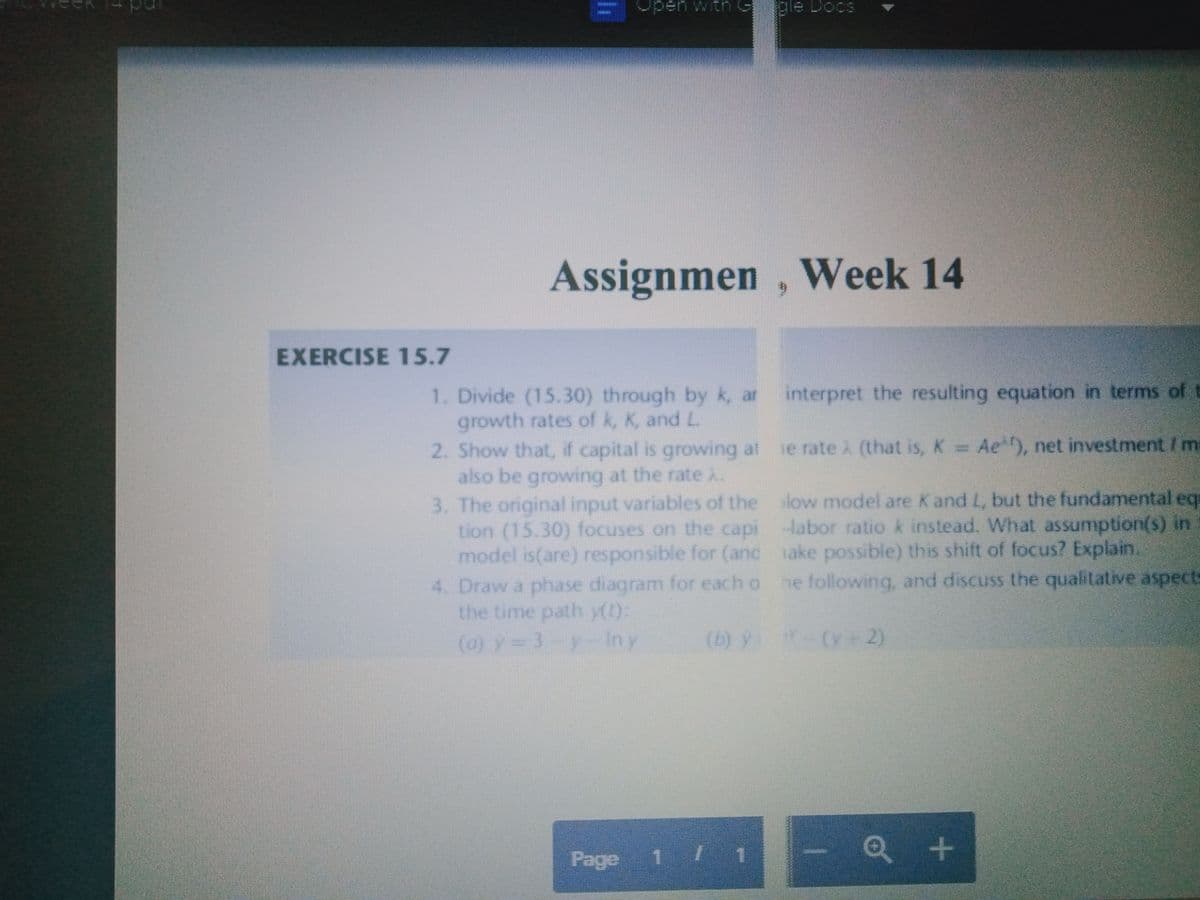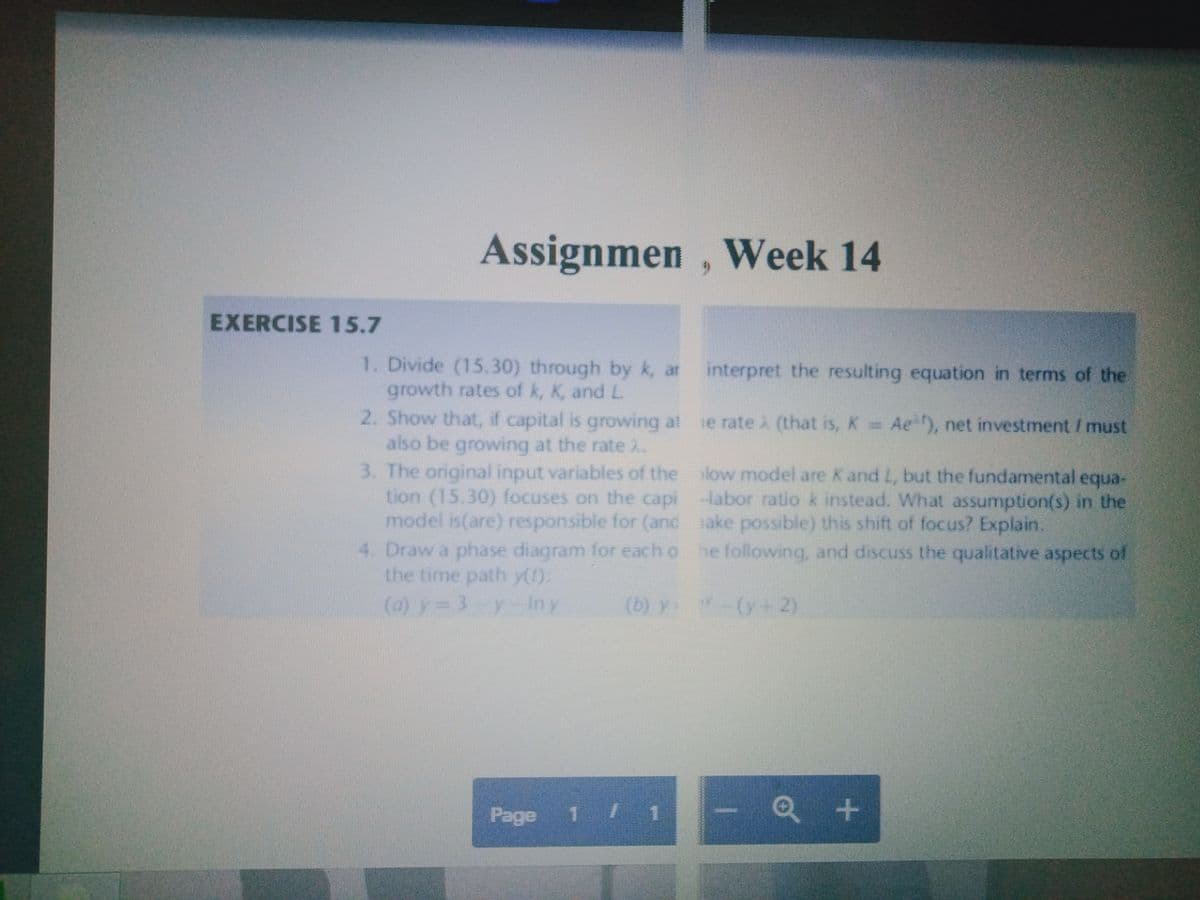Algebra & Trigonometry with Analytic Geometry
13th Edition
ISBN:9781133382119
Author:Swokowski
Publisher:Swokowski
Chapter7: Analytic Trigonometry
Section7.6: The Inverse Trigonometric Functions
Problem 92E
Related questions
Question
1.Find the particular integral of each equation.
a)Y"(t)-2Y'(t)+5Y=2
b)Y"(t)+2Y'(t)-Y=-4
c)Y"(t)+Y'(t)=7
d)Y"(t)=12
e)Y"(t)+3Y=9
2.Find the complementary function of each equation
a) Y"(t)+3Y(t)-4Y=12
b)y"(t)+6y'(t)+5y=10
c) y"(t)-2y'(t)+y=3
d)y"(t)+8y'(t)+16y=0

Transcribed Image Text:uM uedo
Soog e
Assignmen , Week 14
EXERCISE 15.7
interpret the resulting equation in terms of t
1. Divide (15.30) through by k, ar
growth rates of k, K, and L.
2. Show that, if capital is growing at
also be growing at the rate
3. The original input variables of the low model are K and L, but the fundamental eq
tion (15.30) focuses on the capi labor ratio k instead. What assumption(s) in
model is(are) responsible for (anc ake possible) this shift of focus? Explain.
4. Draw a phase diagram for each o he following, and discuss the qualitative aspects
the time path y():
(a) y 3y- Iny
e rate 2 (that is, K Ae), net investment/m
(b) y (y 2)
Page 1 /

Transcribed Image Text:Assignmen , Week 14
EXERCISE 15.7
1. Divide (15.30) through by k, ar
growth rates of k, K, and L.
2. Show that, if capital is growing at
also be growing at the rate i.
3. The original input variables of the low model are Kand L, but the fundamental equa-
tion (15.30) focuses on the capi -labor ratio k instead. What assumption(s) in the
model is(are) responsible for (and sake possible) this shift of focus? Explain.
Draw a phase diagram for each o he following, and discuss the qualitative aspects of
the time path y():
(a) y= 3-y In y
interpret the resulting equation in terms of the
se rate (that is, K Ae), net investment / must
(b) y:
(y+2)
Page
1 1
Expert Solution
This question has been solved!
Explore an expertly crafted, step-by-step solution for a thorough understanding of key concepts.
This is a popular solution!
Trending now
This is a popular solution!
Step by step
Solved in 3 steps with 3 images

Knowledge Booster
Learn more about
Need a deep-dive on the concept behind this application? Look no further. Learn more about this topic, calculus and related others by exploring similar questions and additional content below.Recommended textbooks for you

Algebra & Trigonometry with Analytic Geometry
Algebra
ISBN:
9781133382119
Author:
Swokowski
Publisher:
Cengage

Linear Algebra: A Modern Introduction
Algebra
ISBN:
9781285463247
Author:
David Poole
Publisher:
Cengage Learning

Algebra & Trigonometry with Analytic Geometry
Algebra
ISBN:
9781133382119
Author:
Swokowski
Publisher:
Cengage

Linear Algebra: A Modern Introduction
Algebra
ISBN:
9781285463247
Author:
David Poole
Publisher:
Cengage Learning